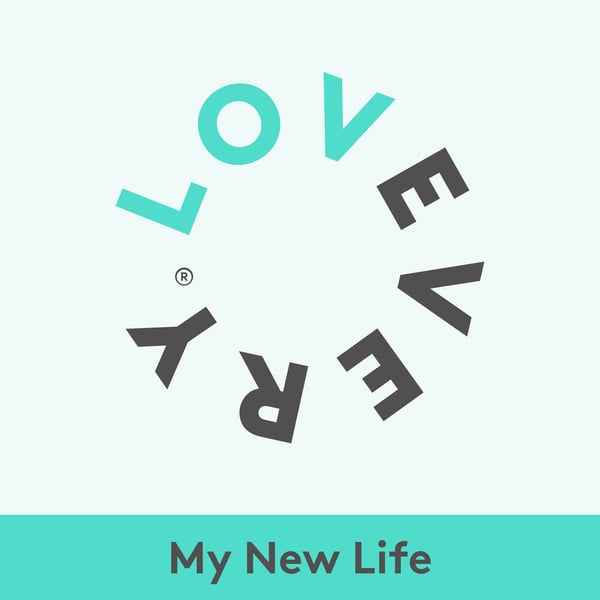Talking About Race & Embracing Differences
My New Life
Kate Garlinge
4.7 • 654 Ratings
🗓️ 10 February 2021
⏱️ 25 minutes
🧾️ Download transcript
Summary
Children’s questions about physical differences often catch us off guard. Parents worry about getting the response wrong, making the situation tense. But TV host and co-founder of ByUs Box, Nicole Stamp, says there’s a better approach.
On today’s episode with host Jessica Rolph, Nicole offers ways of thinking about these encounters from an equity perspective, ensuring everyone comes away from the interaction having had a positive experience. Equally important is the practice of building conversations about inclusion into the every day. After all, these are the conversations — which continue throughout a child’s life — that help our kids to make sense of the world.
Key Takeaways:
[1:45] We teach children to categorize from a young age by encouraging them to distinguish patterns, colors, and shapes. How does this categorization connect to the research on how toddlers are categorizing people?
[5:15] If a 2 or 3 year old walks up to somebody with a mobility device full of questions, how should a parent respond?
[6:20] Nicole explains the difference between diversity and equity.
[7:15] What does inclusion really mean?
[8:55] How can you guide a conversation with a child interested in another child with a physical difference?
[11:45] What kind of proactive steps can parents take to reinforce equity and inclusion?
[17:12] Nicole explains why being “color blind” does not help create the equitable society that we strive for.
[21:30] If a parent avoids conversations about race or other differences among people, their child is picking up on that message in non-verbal ways.
[23:33] Jessica shares her takeaways from a powerful conversation.
Mentioned in this episode:
Brought to you by Lovevery.com
Transcript
Click on a timestamp to play from that location
| 0:00.0 | Parenthood is a time of so much change for you and your baby. |
| 0:12.8 | A little reliable information can go a long way towards making this new life a good life. |
| 0:18.6 | I'm Jessica Rolfe, and this is my new life, a love every podcast. |
| 0:28.9 | We were at the park this weekend, and my daughter B. was staring at a woman in a wheelchair. |
| 0:33.7 | I found myself tensing up when she loudly asked me, |
| 0:36.8 | Mama, why is that woman in a moving chair? |
| 0:39.4 | Is she like Uncle Rob? |
| 0:41.2 | You know the feeling? |
| 0:42.6 | When you're concerned, your child will say something that could be hurtful to someone else. |
| 0:46.6 | And you want to handle it well, but aren't sure what to say. |
| 0:50.3 | These innocent questions can really catch us off guard. |
| 0:53.6 | But they can open the door to important conversations. |
| 0:57.3 | And it's these conversations, which continue throughout a child's life, that help our kids to make sense of the world. |
| 1:04.1 | When done skillfully, they teach our children to embrace differences in a caring, inclusive way. |
| 1:10.1 | My guest on the podcast today is TV host, actor and writer |
| 1:14.2 | Nicole Stamp. She has joined forces with Ashley Baylon to create Bias Box, a collection of books, |
| 1:20.9 | toys, and learning guides that help parents navigate these conversations. So for toddlers, a lot of the materials that, you know, we we give as educators |
| 1:30.5 | are helping them make sense of the world through categories, like shapes and noticing patterns |
| 1:35.1 | and categorizing their, you know, their toys by color or by what, what is a fruit, what is a |
| 1:39.4 | vegetable? How does this categorization actually connect to the research on how toddlers are categorizing people? |
| 1:46.3 | That's a great question. And the answer is that it connects very, very deeply. So children are trying to make sense of so much information as they're encountering the world around them. And the quickest way for them to do so was to categorize. So we know that when a toddler meets when a toddler, you know, meets their first animal, |
| 2:01.1 | it becomes, maybe it's a puppy. And then every animal they see is a puppy for a few more months |
... |
Please login to see the full transcript.
Disclaimer: The podcast and artwork embedded on this page are from Kate Garlinge, and are the property of its owner and not affiliated with or endorsed by Tapesearch.
Generated transcripts are the property of Kate Garlinge and are distributed freely under the Fair Use doctrine. Transcripts generated by Tapesearch are not guaranteed to be accurate.
Copyright © Tapesearch 2025.

